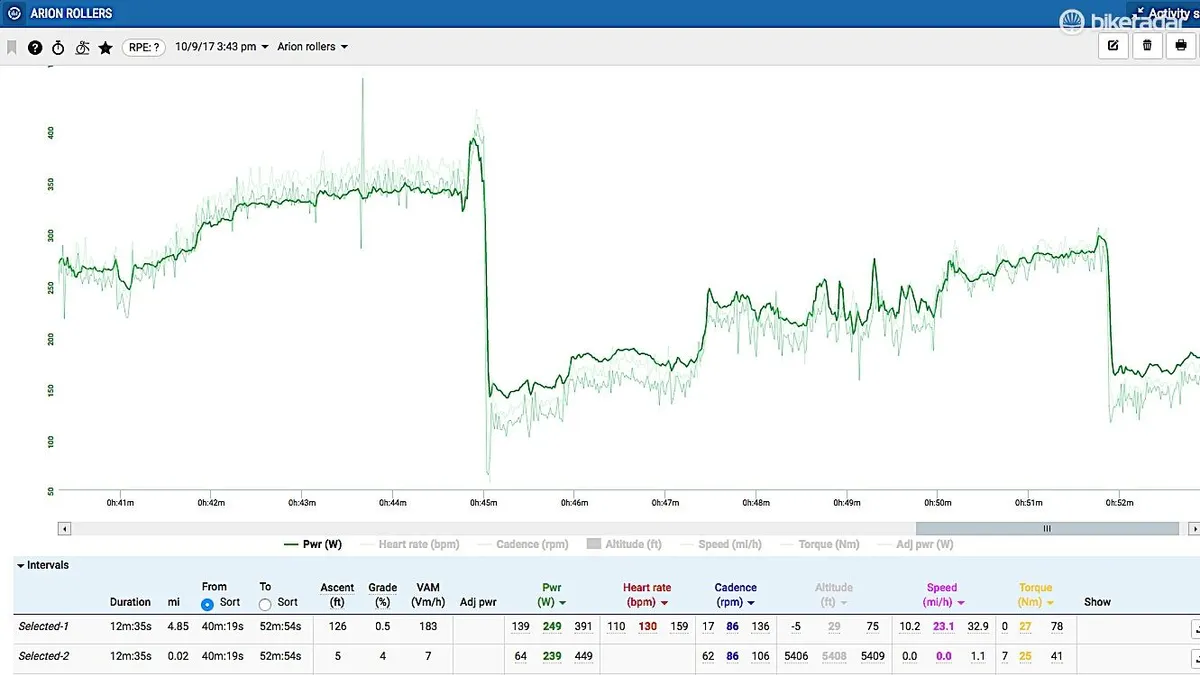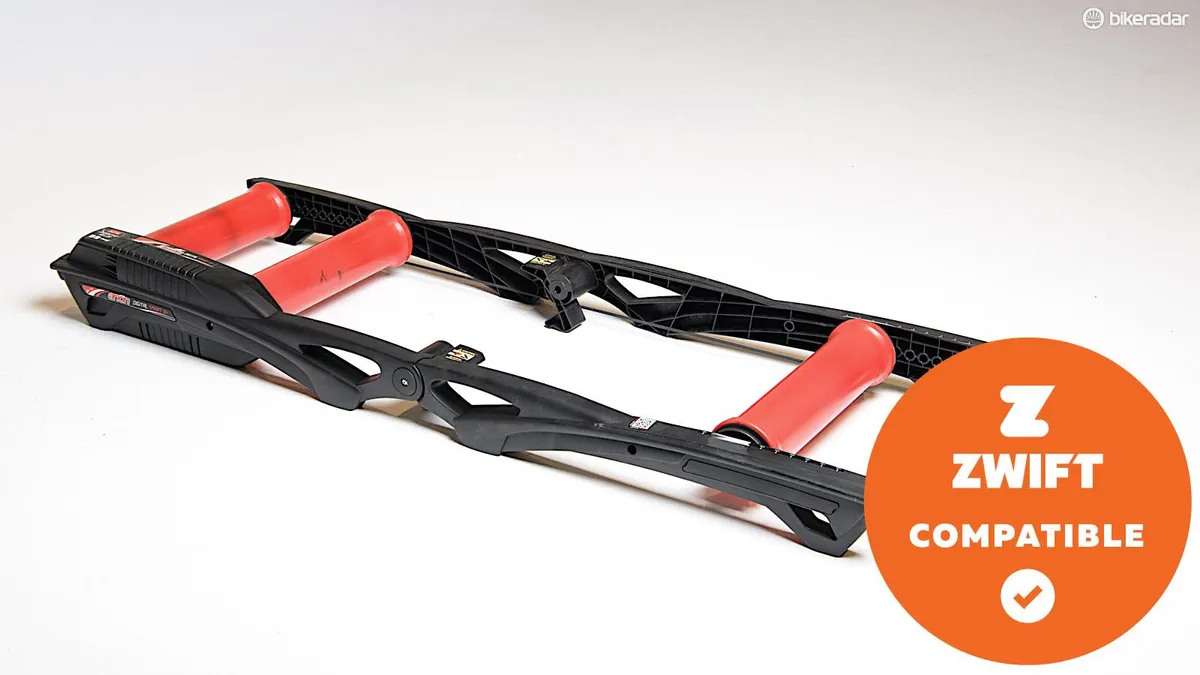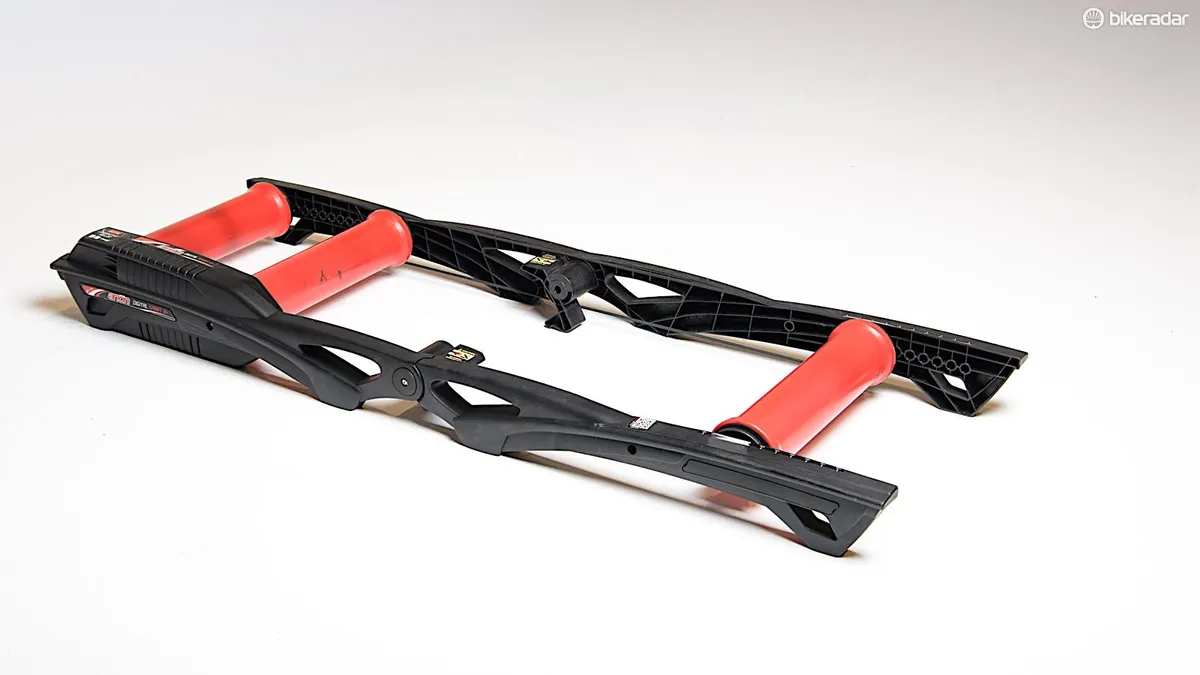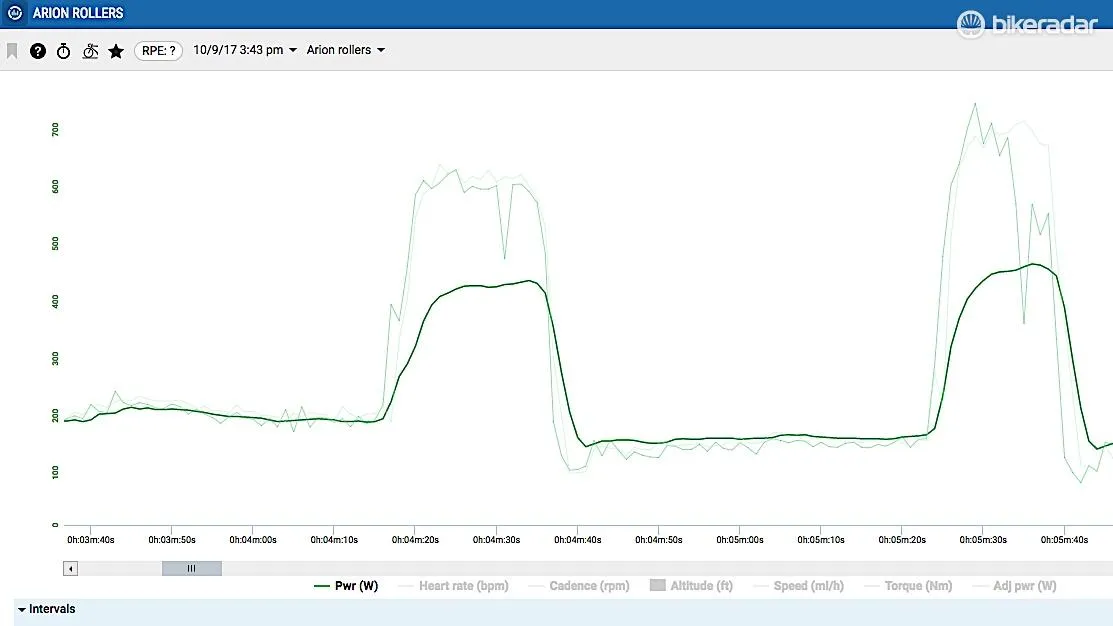With the Arion Digital Smart B+, Elite combines the interactivity of a smart trainer with the freedom of movement of rollers.
You can use them by themselves with the Elite app, but really the charm is to use them with Zwift or another third-party interactive software that controls the resistance.
The Arion Digital Smart B+ works on ANT+ and Bluetooth, so it's easy to connect wirelessly to laptops and smartphones.
The ride feel is nice and smooth, and the wide drums offer plenty of lateral movement.
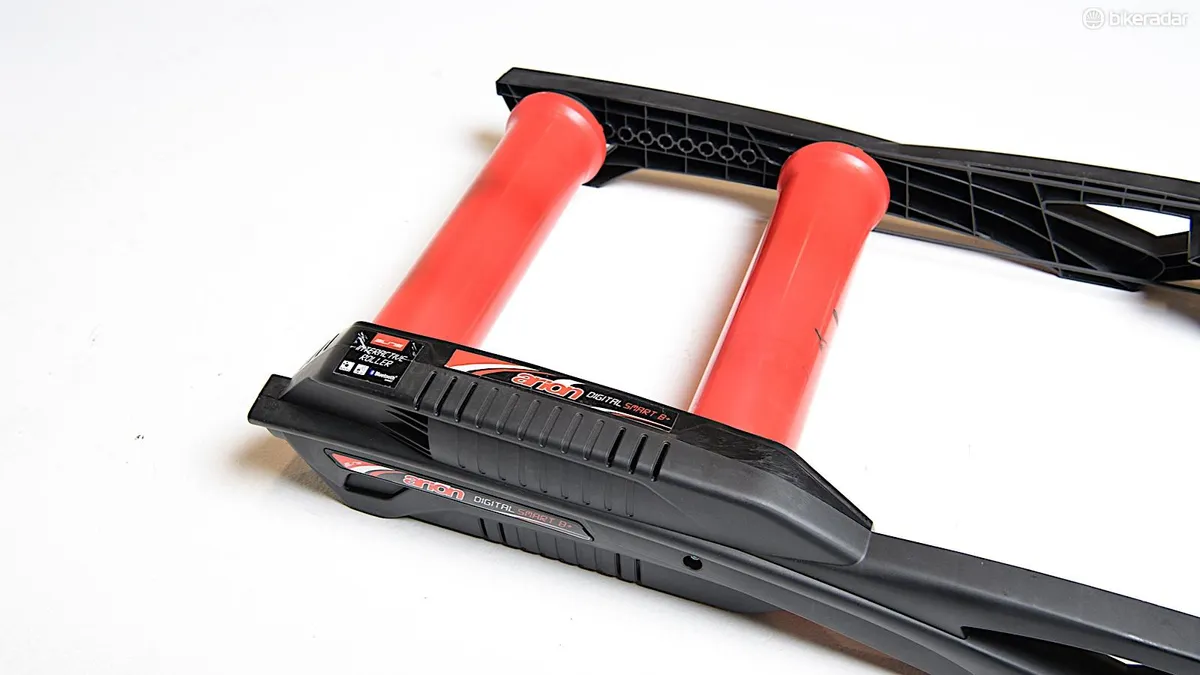
These rollers aren’t that accurate in power measurement. When riding steadily along, the power meter tracks roughly with power meters from Shimano and Garmin, but the Arion reads high at low power and low at high power by as much as 40 percent. (And this is after doing Elite's calibration, where you ride at three prescribed speeds and enter the power required at each as measured by a power meter. This is fun on the rollers with a smartphone!)
There is a resistance ceiling of about 400w, depending on the virtual grade.
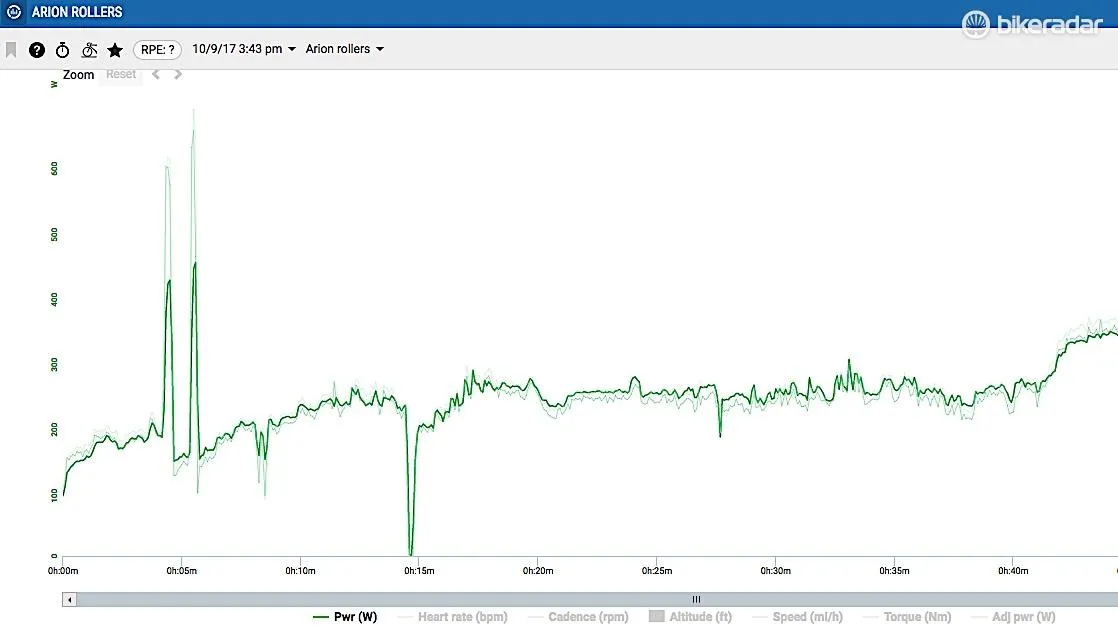
So, the Arion isn't an SRM, but it is a fundamentally unique way to experience virtual riding.
For riders wanting an immersive virtual riding experience, the Arion is a great option, as resistance changes smoothly for hills and drafts. For those wanting to do specific power-based workouts, I'd recommend either using a regular power meter for measurement or going with a direct-drive smart trainer such as the CycleOps Hammer, the Wahoo Kickr or the Tacx Neo.
The rollers fold in half for storage and transport. They are stable once you are on and riding, but the plastic frame feels a little flimsy when you put a cleated foot on the little platform as you climb on and off.
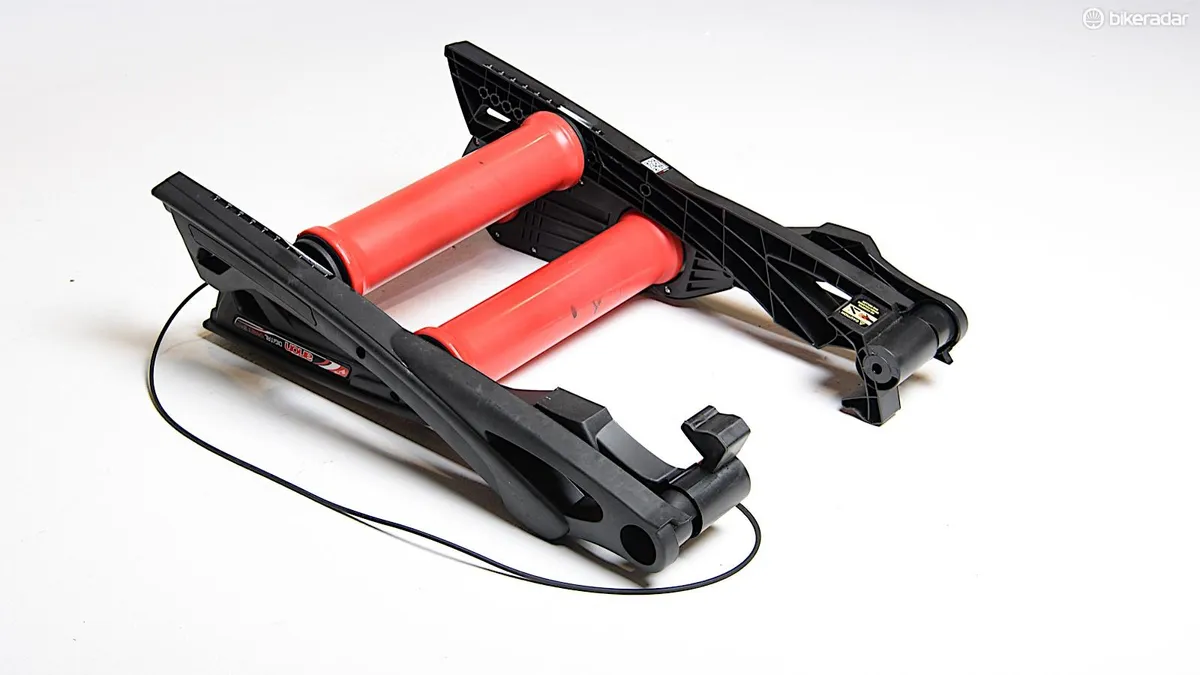
I measured the noise at 85dB at 200w/80rpm and a maximum of 91db. Both of those figures are a little louder than the average smart trainer measured during testing, at about 72 and 85dB, respectively.
Click through the gallery above for more sample power comparisons from my testing.
